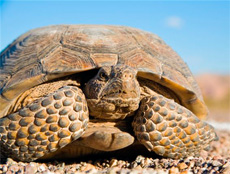November 02, 2012 | News | New Science Publication
The Roots of Aging

© iStockphoto.com/Wild Roses Images
Why do we age? According to classical evolutionary theory, aging evolved because the selective forces of nature diminish as age increases. MPIDR scientists Annette Baudisch and James W. Vaupel suggest that we may have to find an alternative explanation to understand why we age, and present their argument in the current issue of “Science.”
If decreasing selection pressure were the actual reason for the evolution of aging, then all species should be equally affected by these declining evolutionary forces and mortality and fertility in all animals should display patterns over age that are typical for aging, i.e. mortality should rise and fertility should fall. “The data paint a completely different picture,” said author Annette Baudisch. Although younger adult ages are generally subject to higher selection pressure than later ages for both humans and animals, there are species such as the desert tortoise that experience decreasing mortality over adult ages. For the freshwater polyp hydra, the risk of dying at any age is the same over the entire lifespan.
“We have to approach an explanation for the aging process differently in order to close this gap between theory and data,” Baudisch said.
An example of an alternative explanation is the so-called “allocation theory,” typically applied in the field of life history biology as well as in economics. The theory assumes that, because resources are limited, it is important that they are used wisely. In economics these resources may include, for example, labor, capital, and raw materials. For a living organism, essential resources include water, light, and nutrients. The resources can be used to produce offspring that will preserve the animal’s genetic lineage, or they can be used to secure the organism’s own survival.
“Every organism has a difficult decision to make about how best to use these resources at each stage of life,” Baudisch said. In making these decisions, the organism faces conflicting goals. Where is it better to invest: in survival or in reproduction? Both factors are essential to “evolutionary fitness.” In most cases they cannot be maximized simultaneously. The consequences of these decisions can vary greatly from life form to life form. The freshwater polyp hydra, for example, can increase the number of offspring it produces without noticeably affecting its own chances of survival. But for other species, like for mammals, an increase in fertility is associated with substantial additional costs, which can affect not only the survival chances of each individual juvenile, but also the well-being of the adult animals.
“To better understand aging, we first have to learn more about how conflicts between the goals of growth, survival, and reproduction play out among various animal and plant species,” Baudisch said. It is only by understanding these processes that we can one day determine which factors are responsible for the increase in mortality with age among humans, and which factors have contributed to the dramatic increase in human life expectancy over the past century.